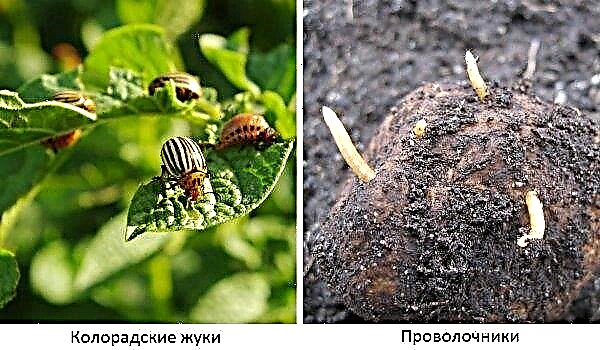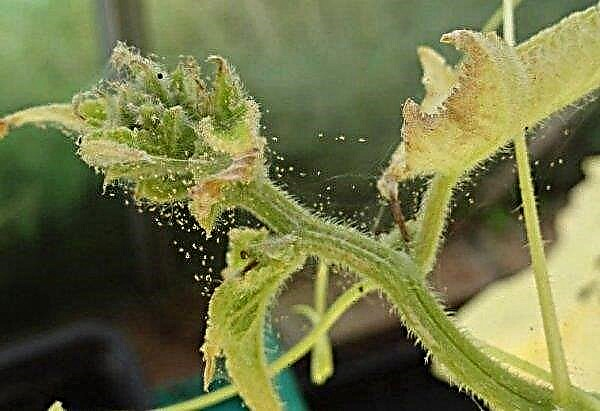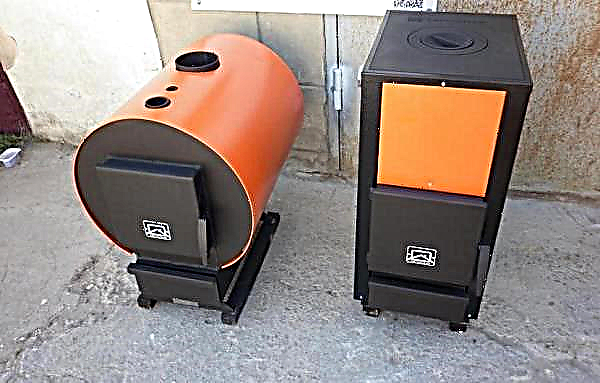The unusual violet of Green attracts many flower growers-collectors. The reason for this is its original changeable color. If you want to grow this variety on your windowsill, you should first study the characteristics of the flower. About the characteristics of the plant and the rules of care, read below.
Plant description
T. Dadoyan brought Green's violet by home breeding. The flower has an unusual appearance. The buds are large, terry; before dissolution they are green, but after opening it becomes clear that the flowers are white from the inside. On the edges of the petals are light green wavy ruffles. Leaves of a saturated green shade, large in size, wavy at the edges. Correct sized socket. Depending on the care, plants can bloom year-round. Typically, flowers bloom from May to November.
The conditions for growing violets at home
In the wrong microclimate, the violet will not bloom. When keeping a flower, pay attention to temperature, humidity and lighting.
Did you know? The violet senpolia, to which the Grin variety belongs, was first discovered in 1892 in East Africa. The species was named after the discoverer of Walter Saint-Paul.
Location and Lighting
The plant requires bright diffused light. Lighting should last 10-12 hours per day. The best solution is to place a flowerpot with a flower on the east or southeast window sill. Problems also will not arise if you put the plant on the western or southwestern window sill. On the north side, the sun will not be enough, so it’s better to illuminate the flower with a special lamp for indoor plants. The south side is no less dangerous - intense sunlight. If there is no other option, cover the violet with a white curtain or a sheet of paper. So the bright light will become diffused.
Temperature and humidity
The violet will feel comfortable at a temperature of +20 ... + 25 ° С. Remember that with a thermometer of -16 ° C the plant stops developing. Keep indoor humidity at 50–65%.
Basic rules for the care of violets at home
Violet care consists of regular watering, top dressing, transplanting and pruning.
Important! Do not allow water to reach the growth point (apical part of the shoot).
Watering
Water the violet every 3 days. It is better to moisten the soil from a watering can under the root, preventing water from entering the plant. Water must be warm, +20 ... + 23 ° С. Violet growers are advised to bathe the plant once a month, because dust accumulates on the leaves, which prevents the flower from breathing. Rinse each sheet plate gently with a soap solution. Let the leaves dry in a warm room. In addition, they can be wet with a paper towel. Return the flowerpot to its place only after complete drying.
Top dressing
Green's violet, like other varieties, requires periodic top dressing. They are brought in from mid spring to early fall. When choosing a product, pay attention to the stage of flower development:
- use organic matter during the formation of the outlet;
- during flowering, use preparations based on potassium and phosphorus;
- when growing leaves it is better to fertilize the soil with nitrogen.
Pruning
The violet will feel good with three rows of leaves. To do this, periodically update the flower, pruning the lower leaves. Also remove withered and dried leaves.
Transfer
The root system of plants increases every year, and the old pot becomes small in volume. In order for the violet to continue to develop, it needs to be transplanted. Transplants are carried out every year. It is better to transplant the flower in March, since after winter the soil should be renewed.
The substrate should consist of the following ingredients:
- 6 parts of peat;
- 5 parts of sheet land;
- 5 parts of turf land;
- 2 parts of sand;
- 1 part humus;
- 0.1 parts of vermiculite.
Take care of the new pot too. The capacity should not be large - only 1-2 cm larger than the previous diameter.
Important! With diseases, especially rotting, a plant can be transplanted ahead of schedule at any time of the year.
Step-by-step transplant process:
- At the bottom of the pot lay a drainage mixture of expanded clay or gravel. Drainage should occupy 1/3 of the volume.
- Pour a layer of substrate of the same thickness over the drainage.
- Carefully remove the violet from the previous pot.
- The soil can not be removed, removed partially or completely cleaned from the roots. The older the plant, the more soil you need to remove.
- Move the flower to a new pot.
- Pour the remainder of the substrate.
Video: violet transplant
How to propagate at home
Green violet propagated by two methods: cuttings and dividing the bush. Each method has its own nuances.
Cuttings
Cuttings are leaf propagation. Spend it as follows:
- Cut the leaf from the second leaf row with the petiole.
- Make sure that the petiole is no shorter than 5 cm. The slice should run diagonally.
- Dry the stalk.
- Fill a glass with water and let it settle.
- Put the leaf in the water with the stalk.
- Wait for the roots to sprout.
- Plant the cuttings with roots in a pot with a substrate of equal parts of sand, soil and vermiculite.
- Close the planted stalk with a glass jar and wait for the children to germinate. Now you can remove the jar.
- When the leaves sprout to 5 cm, transplant the plant in a soil suitable for violets.
Video: propagation of violets by cuttings
Dividing the bush
The division of the bush is also called the rooting of stepsons. Divide the bush according to the instructions below:
- Wait for the sinus leaves to form a daughter outlet.
- Using tweezers, separate the stepson from the stem.
- Fill the glass with a suitable substrate and place the separated part of the bush in it.
- Cover the plant with a jar or glass glass and place it in the light.
- When the socket will be in growth, remove the shelter.
Video: propagation of violets by dividing the bush
Growing difficulties
Two common problems when growing Green's violets are parasite attacks and diseases. However, in most cases, the plant can be cured.
Did you know? In esoterics, violet is considered a family amulet that provides strong relationships and homeliness.
Of the pests for the flower are dangerous:
Complex insecticides, for example, Aktara, Fitoverm or Aktellik, help against pests. The flower also harms the fungus.
The most dangerous fungal diseases are flower growers:
If plaque, rot, or stain is detected, transplant the plant urgently. When replanting, remove the damaged parts. In addition, treat the flower with fungicide; An excellent choice would be Topaz. Thus, caring for Green's violet is practically no different from growing other varieties. Follow the condition of the plant, regularly take care of it, and then the flower will delight you with lush buds.












